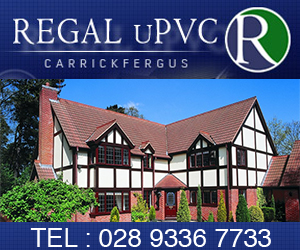05/08/2011
Slight Sales Rise In Subdued Housing Market
The most comprehensive survey of residential property in Northern Ireland has produced evidence of a slight growth in demand within the local housing market in the second quarter of 2011.
However, it also showed that overall price levels remain subdued.
The latest University of Ulster Quarterly House Price Index, produced in partnership with Bank of Ireland and the Northern Ireland Housing Executive (NIHE), showed the number of transactions between April and June rose to 1,062 compared to 925 in the first quarter of 2011.
The overall average price of a house in Northern Ireland in the first quarter was £137,814, a decrease of over 15% on the same time a year ago.
Quarterly performance is also weaker, with a weighted price decline of 2.4% in the second quarter compared to the first three months of 2011.
According to the authors of the report Professor Alastair Adair, Professor Stanley McGreal and Dr David McIlhatton: "The findings of the current survey highlight evidence of higher demand levels in the Northern Ireland housing market, with transaction volumes at their highest level since the end of 2007 as purchasers avail of the current affordability and value for money in the local market.
"The continuing growth in transactions is welcome news for the local market and, while there is still some considerable distance to travel, it is a positive pointer towards the first signs of recovery in the local market.
"The expectation is that as demand starts to return to the market price levels will follow, but with an inevitable time lag."
Referring to the annual decline of more than 15% in prices, the author said the figure was comparable to that in the second quarter of 2010, which coincided with the formation of the coalition government in the UK and which, in many respects, was a relatively buoyant quarter for the housing market.
Since then, they said, the housing market had to operate within a different economic, fiscal and policy context set by the government.
The authors suggested there was some effect from house re-possession sales where properties tended to be sold at highly competitive prices. They also noted that properties are tending to sell below rather than at or above the asking price with bidding down rather than up, characterising the market.
The price structure of the housing market has remained very consistent with the first quarter of 2011, suggesting that the re-adjustment of price levels may be stabilising.
The market varied considerably across Northern Ireland, with lower declines and evidence of stability in some areas within Belfast and the Greater Belfast Metropolitan Area commuter belt and Lisburn.
Levels of sales in Provincial areas are by comparison significantly lower in numbers and pricing remains more volatile.
Alan Bridle, UK Economist, Bank of Ireland UK, said: "The increased market activity of the last quarter at more affordable price points, partly driven by cash-buyers, is inevitably dragging the overall average price lower as a form of market clearing takes place.
"While the market still faces into significant headwinds in 2011, there is now more tangible evidence of 'demand at the right price' which represents some improvement on the very difficult conditions of the last few years."
The NIHE's Head of Research, Joe Frey, said: "The higher volume of transactions during the second quarter of 2011 is good news. However, it is important to be cautious.
"The full effects of the public expenditure cuts, including significant reductions in Housing Benefit expenditure, have yet to be felt.
"The reduction in purchasing power that will result from these is bound to impact negatively on the market."
(GK/BMcC)
However, it also showed that overall price levels remain subdued.
The latest University of Ulster Quarterly House Price Index, produced in partnership with Bank of Ireland and the Northern Ireland Housing Executive (NIHE), showed the number of transactions between April and June rose to 1,062 compared to 925 in the first quarter of 2011.
The overall average price of a house in Northern Ireland in the first quarter was £137,814, a decrease of over 15% on the same time a year ago.
Quarterly performance is also weaker, with a weighted price decline of 2.4% in the second quarter compared to the first three months of 2011.
According to the authors of the report Professor Alastair Adair, Professor Stanley McGreal and Dr David McIlhatton: "The findings of the current survey highlight evidence of higher demand levels in the Northern Ireland housing market, with transaction volumes at their highest level since the end of 2007 as purchasers avail of the current affordability and value for money in the local market.
"The continuing growth in transactions is welcome news for the local market and, while there is still some considerable distance to travel, it is a positive pointer towards the first signs of recovery in the local market.
"The expectation is that as demand starts to return to the market price levels will follow, but with an inevitable time lag."
Referring to the annual decline of more than 15% in prices, the author said the figure was comparable to that in the second quarter of 2010, which coincided with the formation of the coalition government in the UK and which, in many respects, was a relatively buoyant quarter for the housing market.
Since then, they said, the housing market had to operate within a different economic, fiscal and policy context set by the government.
The authors suggested there was some effect from house re-possession sales where properties tended to be sold at highly competitive prices. They also noted that properties are tending to sell below rather than at or above the asking price with bidding down rather than up, characterising the market.
The price structure of the housing market has remained very consistent with the first quarter of 2011, suggesting that the re-adjustment of price levels may be stabilising.
The market varied considerably across Northern Ireland, with lower declines and evidence of stability in some areas within Belfast and the Greater Belfast Metropolitan Area commuter belt and Lisburn.
Levels of sales in Provincial areas are by comparison significantly lower in numbers and pricing remains more volatile.
Alan Bridle, UK Economist, Bank of Ireland UK, said: "The increased market activity of the last quarter at more affordable price points, partly driven by cash-buyers, is inevitably dragging the overall average price lower as a form of market clearing takes place.
"While the market still faces into significant headwinds in 2011, there is now more tangible evidence of 'demand at the right price' which represents some improvement on the very difficult conditions of the last few years."
The NIHE's Head of Research, Joe Frey, said: "The higher volume of transactions during the second quarter of 2011 is good news. However, it is important to be cautious.
"The full effects of the public expenditure cuts, including significant reductions in Housing Benefit expenditure, have yet to be felt.
"The reduction in purchasing power that will result from these is bound to impact negatively on the market."
(GK/BMcC)
Related Northern Ireland Business News Stories
Click here for the latest headlines.
18 August 2009
NI Housing Recession Over?
The last two years of house price freefall may be over. Normally cautious estate agents are reporting increasing levels of inquiries now being translated into sales.
NI Housing Recession Over?
The last two years of house price freefall may be over. Normally cautious estate agents are reporting increasing levels of inquiries now being translated into sales.
08 June 2004
NI housing market shows sustainable rise
Northern Ireland’s housing market is growing at a much more sustainable rate than in the rest of the UK, with the cost of the average property going up by 8.6% over the year.
NI housing market shows sustainable rise
Northern Ireland’s housing market is growing at a much more sustainable rate than in the rest of the UK, with the cost of the average property going up by 8.6% over the year.
03 January 2002
House price growth to slow in 2002
The property market is set to experience a slip in demand during 2002 according to leading UK mortgage lender Nationwide and a twice-yearly survey by the CBI and property advisers GVA Grimley. The Nationwide review of 2001 revealed that UK house prices grew significantly during 2001 despite the global economic slowdown.
House price growth to slow in 2002
The property market is set to experience a slip in demand during 2002 according to leading UK mortgage lender Nationwide and a twice-yearly survey by the CBI and property advisers GVA Grimley. The Nationwide review of 2001 revealed that UK house prices grew significantly during 2001 despite the global economic slowdown.
04 August 2011
RICS Highlights Construction Contraction
The divergence in performance between the construction sector in Northern Ireland and in other parts of the UK grew further in the second quarter of the year. This is according to the Royal Institute of Chartered Surveyors (RICS) Construction Market Survey for the second quarter of 2011.
RICS Highlights Construction Contraction
The divergence in performance between the construction sector in Northern Ireland and in other parts of the UK grew further in the second quarter of the year. This is according to the Royal Institute of Chartered Surveyors (RICS) Construction Market Survey for the second quarter of 2011.
03 August 2001
Halifax report house price rises dip in July
Rampant house price rises at the start of the year have shown their first dip according to a new survey released by the Halifax. In July the average house price rise dropped off to 0.7 percent, which has been interpreted as the first sign that the early year rises of almost 11 per cent may be tailing off.
Halifax report house price rises dip in July
Rampant house price rises at the start of the year have shown their first dip according to a new survey released by the Halifax. In July the average house price rise dropped off to 0.7 percent, which has been interpreted as the first sign that the early year rises of almost 11 per cent may be tailing off.
-




 Northern Ireland WeatherToday:A sunny but frosty start for many. However cloud increases by midday with a few showers reaching the north coast, these mostly light but spreading inland this afternoon. Chilly. Maximum temperature 8 °C.Tonight:A rather cloudy evening with scattered showers. Becoming drier through the night with some good clear spells developing and a patchy frost away from coasts. Minimum temperature 0 °C.
Northern Ireland WeatherToday:A sunny but frosty start for many. However cloud increases by midday with a few showers reaching the north coast, these mostly light but spreading inland this afternoon. Chilly. Maximum temperature 8 °C.Tonight:A rather cloudy evening with scattered showers. Becoming drier through the night with some good clear spells developing and a patchy frost away from coasts. Minimum temperature 0 °C.

